For some, living in the woods is a mean of escaping the usual daily craziness while others see it as more of a way of life. Whether you plan on living outdoors for a few weeks or a longer period of time, there are a fair amount of factors that will need to be carefully considered. It’s no secret that planning can make all the difference, so preparing for your wilderness adventure should be done well in advance.
[the_ad_placement id=”in-text-1-type-r”]If, for whatever reason, you find yourself unexpectedly stranded in the woods, you obviously won’t be able to prepare. However, knowing and understanding basic survival skills will definitely make all the difference; particularly if you are faced with an emergency or challenging situation.
Why live outdoors?
While many people look for information on how to live in the woods, there are those out there who wonder why choose to live outdoors. When you have a cosy home and a comfortable bed, why would you want to leave all of your treasured comforts behind for an unpredictable trip?
See also: How to Live Off The Grid: the Secrets of Living with No Money
Well, for those who enjoy the idea of giving up on just about every luxury they own, living in a natural setting can prove to be a greener lifestyle. By living off the land and consuming less than you normally would in terms of gas and other power sources, you will do far less harm to the environment.
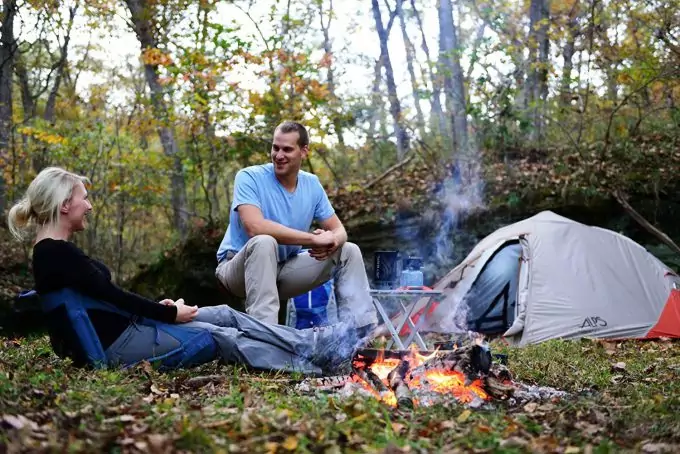
Apart from this, your body and mind can also benefit enormously from all that fresh air and the sound of nature surrounding you. No loud noises, no traffic and no eccentric boss yelling at you. What’s not to love? It really is the ultimate getaway.
If you enjoy at least one planned trip, you will also find yourself that much more prepared just in case a significant disaster happens to strike or if you find yourself lost in the woods. Reading up on the subject is one thing. It’s putting the theory you’ve read into practice that makes it count for something.
Planning the location
Part of learning how to survive in the woods will require that you find some sort of testing ground. In other words, you will need to look for a suitable area that is pretty much void of civilization as well as abundant in fauna and flora.
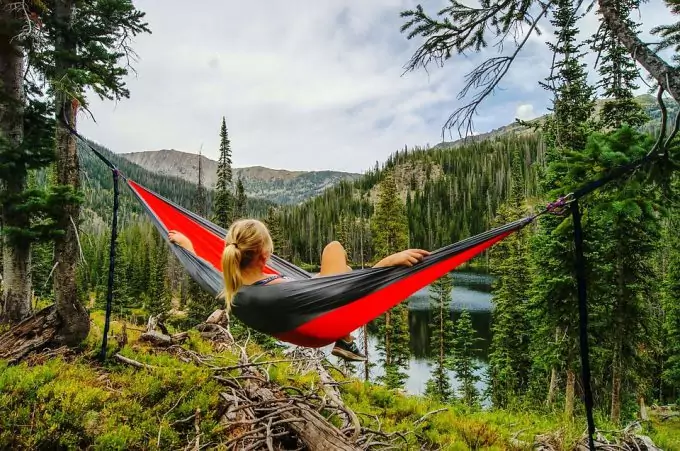
Once you have found the perfect spot to carry out your first wilderness experience, you will need to conduct additional research. Find out just how far away it is and how to get there. You should also find out if it is privately owned or government owned. Either way, you will need to ensure that you obtain any and all relevant documentation and permits in order to legally access the land and set up camp. If you are planning on hunting or fishing, you may need additional licenses, and you will need to familiarize yourself with the local regulations and any restrictions.
Planning the time frame
The amount of time you intend on spending outdoors will, to a large extent, determine how to endure life in the wilderness. You will need to consider the weather conditions as well as how long you plan on staying.
If you are planning your outdoor trip for a few weeks, your plan will differ vastly from that of a trip that lasts for a full year or even half a year. In addition, if you are planning to live outdoors during the summer, you will need different supplies compared to those needed in the winter. Of course, you should always pack clothing for all seasons, just in case!
The time of year will also determine the kind of hunting season that you’re in for. Not all animals may be hunted throughout the year, and there are specific regulations in place that protect them during certain times of the year.
Understand potential risks
Establishing how to stay alive in the woods will mean that you need to take into account the very real risks that you will face. It’s not just about the weather conditions and finding a reliable source of food. You also need to consider the risk presented by certain wild animals and potentially hazardous plants.
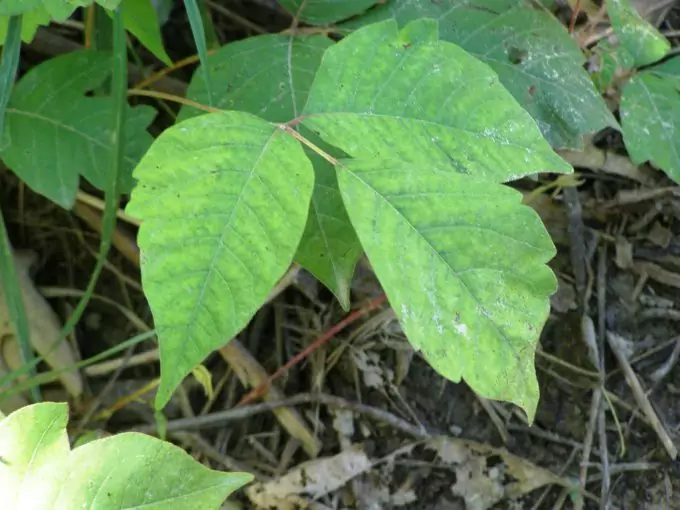
If you plan on living in a location where wild cats or bears roam, you could be in for some not-so-pleasant surprises. Likewise, you will need to be able to identify dangerous and toxic plants. Not every gorgeous berry is ripe for eating! In some instances, the fruit of a plant is its best defence mechanism!
You will enjoy several hours of daylight, but you will also need to make it through each night. With limited light at times, you will stand a greater chance of tripping, falling, or getting hurt. When you do go out (be it day or night), you have to mind your steps. Your medical supplies will come in handy should you get injured. You should also keep some form of communication just so that you can reach out in the event of an emergency.
Many adventure seekers understand the various risks and, for this reason, they choose to join a community instead of going it alone. When you are in a group, your chances of survival are that much greater. Not to mention the fact that you will avoid getting bored out of your wits!
Food and supplies
By packing the right supplies and preparing yourself by brushing up on several skills, you will make it that much easier to survive the conditions in the woods. The list below details the main points of preparation.
Prepare to hunt
Meat is an important source of protein and, since you won’t find any supermarkets nearby, you will need to determine how to fend for yourself. The method of hunting that you choose will depend on the type of game you’re trying to catch. Likewise, what you hunt will depend on the season. Check out our tips and guidelines on predator hunting to prepare you for the big game.
Since you won’t have access to a fridge or freezer, the summer can be troublesome when it comes to storing meat. In this case, you have two general options. You could hunt small game on a regular basis and basically only hunt what you plan on eating that day. Alternatively, you could hunt beyond your daily needs. Dry and salt the meat so that your meat will last without refrigeration.
Hunting smaller game like rabbits can be done using several methods like long-netting, traps, snares, or shooting of course. Larger game are usually hunted by shooting or setting up snares. Either way, it’s important to make yourself aware of the relevant laws and if any restrictions apply. Familiarize yourself with hunting techniques and make sure that you take any necessary supplies.
Gone fishing
Fish is another excellent source of nutrients and, provided you are setting up camp near a lake or river with a healthy fish population. Like meat, fish can also be caught on a daily basis, or you can dry the fish and store it for a later stage. In many cases, it can prove highly beneficial to stock up on meat while you can. Fish might be abundant one month and not so abundant the next.
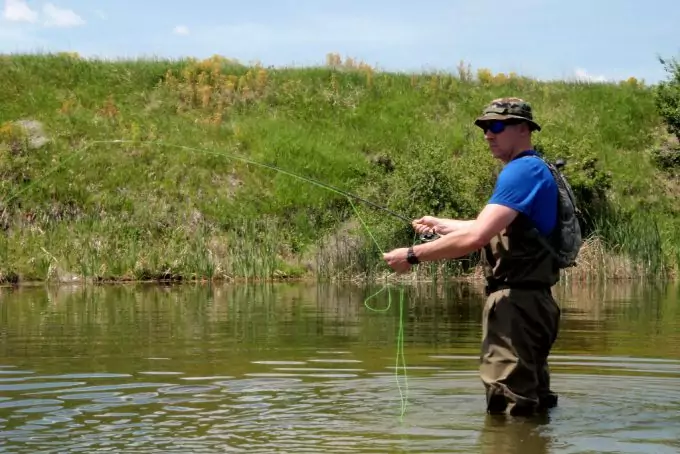
If you manage to get a great catch during the colder months of the year, you can easily rely on the low temperatures to help keep your fish and meat fresh without requiring actual refrigeration. Just be sure to place your meat in a secure location, so that other wild animals don’t steal it! For tips on how to lure those fishes, see our article on this important topic.
Gathering plants
Plants are everywhere in the woods, and many of them have the most beautiful flowers and bright berries. As delicious as they might look, not all plants are good for human consumption. It’s important to understand that, unlike animals, plants can’t flee from predators. Their only defense mechanism comes in the form of toxins. Some plants are toxic from root to tip while others are good to eat but have poisonous berries and flowers. See our important list of wild plants that you can eat for survival for more information.
When planning your trip, you should research your location and conduct research on the various plants native to these parts. Find out which ones are good to eat and learn about their nutritional value while you’re at it. For example, if you come down with a cold, you might have some plants nearby that contain Vitamin C. The common cold has no cure but Vitamin C can really help soothe the symptoms until it passes.
https://www.youtube.com/watch?v=9RRNWOwsi8c
Remember that some plants are even toxic to the touch. Take Poison Ivy, Poison Oak and Poison Sumac for example. Both contain a particular oil that causes serious irritation and inflammation.
Other food
Apart from living off the land itself, there’s no harm in taking along some extra food supplies like popcorn, rice, coffee, tea, sugar and similar items you feel you need but won’t necessarily find in the wild. However, you should avoid overloading yourself by carrying things you like but can live without. A few canned meals can prove handy just in case you encounter a day or to off poor hunting.
Water
Like food, you cannot survive without water, and you can’t exactly drag a limitless supply along with you. You will need to determine how to make your drinking water safe without having to run to the store every other day.
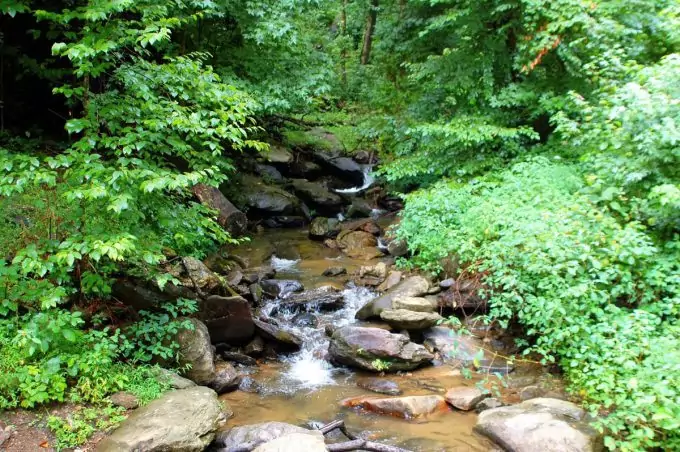
The first thing you must understand is the fact that water can be home to all sorts of microscopic germs. If you consume contaminated water, you can become dreadfully ill in a matter of minutes or hours. Boiling is a highly effective way of eliminating contaminants and purifying your water. You will need to make sure that you boil your water properly. A slight boil will not do.
[the_ad_placement id=”in-text-2-type-r”]It needs to boil quite furiously for a few minutes before you remove the pot from the source of heat and cover. If you do not cover while the water is cooling, much of it will evaporate. If you boil your water in the evening, you will have a cool supply in the morning. Likewise, if you boil another pot in the morning, it will be cool enough by the afternoon (depending on the daily temperatures).
Another potential concern is the presence of larger impurities in the water like sand and dirt. Even if you cannot see the dirt particles, drinking them will mean that they will enter your digestive system and could end up in your kidneys and other parts of your body. If these deposits build up, you could face serious medical problems.
A water filtration device is definitely a great investment. Some filters are designed for one person while others are made to filter larger quantities that accommodate families and even communities. Choose the right purification system to suit your needs.
Medical supplies
Being so far from civilisation is no joke. Particularly if you get sick or injured. You will need to stock up on a few basic medical supplies just in case you or anyone in your travel group needs treatment.
Some of the best medication to keep on hand includes:
- Aspirin for headaches
- Paracetamol for fever
- Anti-vomit medication
- Anti-diarrhoea medication
- Anti-inflammatory medication
- Any prescription medication you may need (like heart or diabetic medicine for example)
- Anti-histamines
- Ointments for various conditions including skin irritations, burns, muscle pains, and so on.
- Bandages and band-aids
- Splints and slings
- Thermal blanket(s) or Space Blankets as they are also known
- Medical scissors, gloves and other medical equipment
- Alcohol for disinfecting and cleaning out wounds
Cooking equipment
In many cases, you can make use of various objects found in nature to prepare your food. You can use rocks to build a fireplace, and the stones will serve to protect your surroundings from fire damage. If you can’t find rocks, you can dig a hole and build your fire in the ground to make a kind of fiery oven.
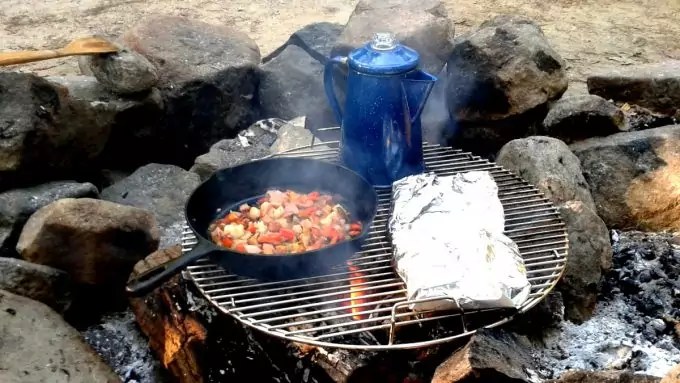
To purify your water, you will need a pot with a lid, and you will need cups, plates or bowls and some kind of cooking and eating utensils too. Each person will need their own set of eating utensils, of course, but you won’t need as much as you might think. Consider items that will serve a dual purpose or multipurpose like a Swiss Army Knife. Not only can you use your knife for meal preparation, but it can also be used when you are setting up camp and in so many other situations.
Shelter
The type of shelter you choose will largely be determined by the weather and your surroundings you will likely encounter. For example, if the weather you are likely to experience is bound to be fairly harsh, you will need a durable form of shelter. There are different kinds of tents, and each one is suited for different weather conditions.
While some lightweight varieties can withstand a degree of wind and rain, there are those that are tougher and better suited for snow and heavier downpours. You might enjoy investing in a tent as well as an additional tarp. Eating under the tarp will prove far more pleasant than having to hide inside your tent when dining in the rain.
The base of your shelter needs to be durable and waterproof like the rest of your tent. Make sure that you take a repair kit, extra pegs and ropes for securing your tent just in case it becomes damaged or ropes snap.
Clothing
Like shelter, you will also need to choose your wardrobe very carefully. Items that you will need to include are:
- Summer clothes
- Waterproof jacket and pants
- Winter clothes
- Accessories like hats and gloves
- Tough, waterproof boots
- Underwear and socks
- Regulation gear like an orange jacket so that you can be easily spotted by other people in the area and prevent hunting accidents.
Other supplies
Apart from these main categories of items that you will need to take along, you will also need several miscellaneous items. Firstly, you will need some kind of pillow and a sleeping mat. If you plan on living outdoors for a longer period of time, you might want to invest in a durable air mattress and pump. You will also need blankets. Don’t forget to take extra just in case they get wet.
You will need to keep your fire going for making food, heat, and light. You will, therefore, need plenty of matches and perhaps some tinder and flint. Waterproof matches are the best bet of all for obvious reasons.
For extra light, you should pack a flashlight or two along with extra batteries. If possible, flashlight with a solar charger might prove better in the long run.
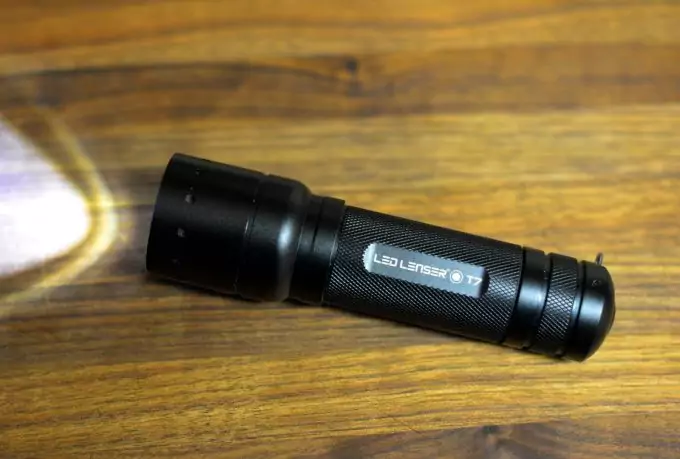
It always helps to keep things like rope, waterproof containers or bags and basic tools like a small axe for chopping firewood.
Take along a few good books and other forms of entertainment like a chess board, a deck of cards and similar social games that can be played when you’re not out hunting, exploring, or taking a nap.
Don’t forget about the importance of hygiene! Take plenty of soap, toothpaste, shampoo, toilet paper, and other toiletries along for the trip. Don’t bother with such items as make-up, perfume and aftershave. In fact, it’s best to avoid perfumed substances if you want to keep bugs at bay!
Take some bug spray to repel insects like mosquitoes and don’t forget to back sun protection lotion with a high SPF as well as an After Sun lotion or gel just in case you do get a nasty burn.
Take along a basic guide to first aid as well as a forestry guide book. What you read today, you might not remember after a week or a few months. Having these resources on hand will prove advantageous at some time or another.
Take a break from technology
Enduring life in the forest might seem tough for those who are at least somewhat dependent on their phone, computer, the internet, or TV. Technology is a luxury that we can all do without when trying to survive in such conditions. You cannot simply recharge your phone or tablet whenever you like, and your reception might not even be that great. Not to mention trying to drag a TV along wherever you go!
Take this opportunity to cut those strings and release yourself from your tech dependence. Sure, as mentioned earlier, you should definitely keep some kind of means of communication but this does not mean that you should ignore your surroundings while you surf the web or chat to friends. This defeats the whole point of getting away. In addition, it’s great practice just in case you find yourself in a situation where you’re unexpectedly stuck in the woods without access to such luxuries.
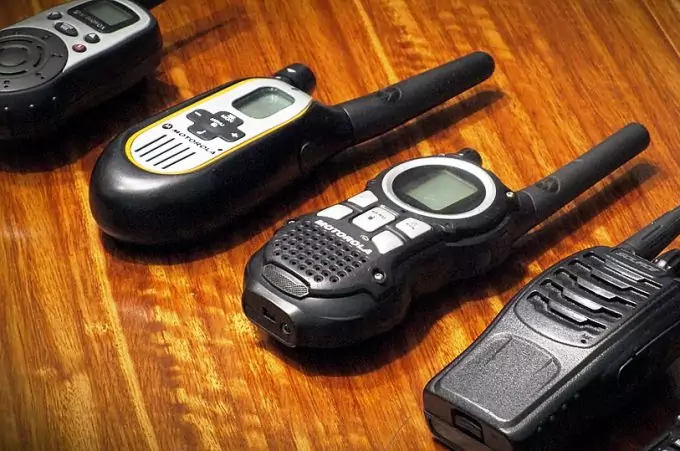
For those travelling as a group, you can really benefit by investing in radio communication devices like Walkie-Talkies. That said, they should only be used as needed since you will consume batteries. If possible, get a solar power outlet to charge various small devices and batteries.
Prepare to have fun!
Once you learn how to live in the woods, you might be reluctant to return to your usual city life! Living in beautiful natural surroundings can be challenging but it can also be extremely rewarding. If you are planning such a trip, make sure that you prepare properly in advance and be sure to let at least one friend know where you are headed and when you plan on returning.
[the_ad_placement id=”in-text-3-type-r”]If your trip is scheduled to continue for an extended period of time, you might want to check in with a particular friend or family member back home on a regular basis. This way, should you run into trouble, they will know and they can alert the relevant authorities.



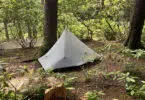

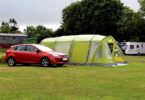
You don’t need to have all the gadgets that were mentioned but they are nice to have around, especially when you’re in a tight spot. A true survivalist uses what he can to build, hunt, fish and live in the woods.
Living in the woods is kinda scary especially at night. You will hear all the sounds of the insects, encounter predators and much more!
BUT, if you are well-prepared,you don’t have to be scare. This article is very useful. I agree that food, water, medicine, clothing, and shelter should be on your priority list. If you are a beginner, make sure to bring fire starters, flashlight, and a hatchet (if you know how to use). You can always practice at your house yard for a night before camping out.
Living in the woods is the best thing to do. Nothing beats hunting for food, fishing and being independent. However, a lot of people make the mistake of not preparing for diseases and not maintaining hygiene properly.
It is easy to relax and stop worrying about that kinda stuff when you are alone, but it is really important to have proper medical supplies.
Make the most out of this article, and enjoy what nature has to offer.